- The John Malkovich EXCLUSIVE
- Marlborough Hits 50
- The Six BEST wine books
- Ventoux – Next Century Wines
- Ageing English Fizz: How, Why and What
- The Ten Wines Never to be Without
- The New Face of Languedoc
- Ukraine – Wine not War
- Our WINES OF THE YEAR (2023)
- A Southern French Feast
- ORANGE WINE Part 1
- ORANGE WINE Part 2
- Ancient Vines to the Rescue in St Mont
- Light Strike: Wine’s Not-So-Secret Scandal
- Grower Champagne with Lea & Sandeman
- Going Gaga for Garnacha
- Sassicaia – The Insider’s Guide
- UK Wine’s Counterculture
- News & Views
- Rías Baixas – Mists, Myths, Mariscos
- Rías Baixas – Albariño with Attitude
- Red Wine Headaches: A Eureka Moment?
- Wine and War – Palestine, Israel and Lebanon
- We Need To Talk About Rosé
Summary
Light strike is probably the biggest wine quality issue you’ve never heard of. Bigger than cork, bigger than oxidation or anything else.
That pretty-looking bottle of rosé perched on the bright supermarket shelf in a clear glass bottle? Probably knackered.
If it’s been exposed to light for a while, it may end up smelling of boiled cabbage, drains, or wet dog.
At the very least, its character will almost certainly have been degraded from what its winemaker intended. And that’s not what you’re paying your hard-earned money for.
It’s nothing less than daylight robbery.
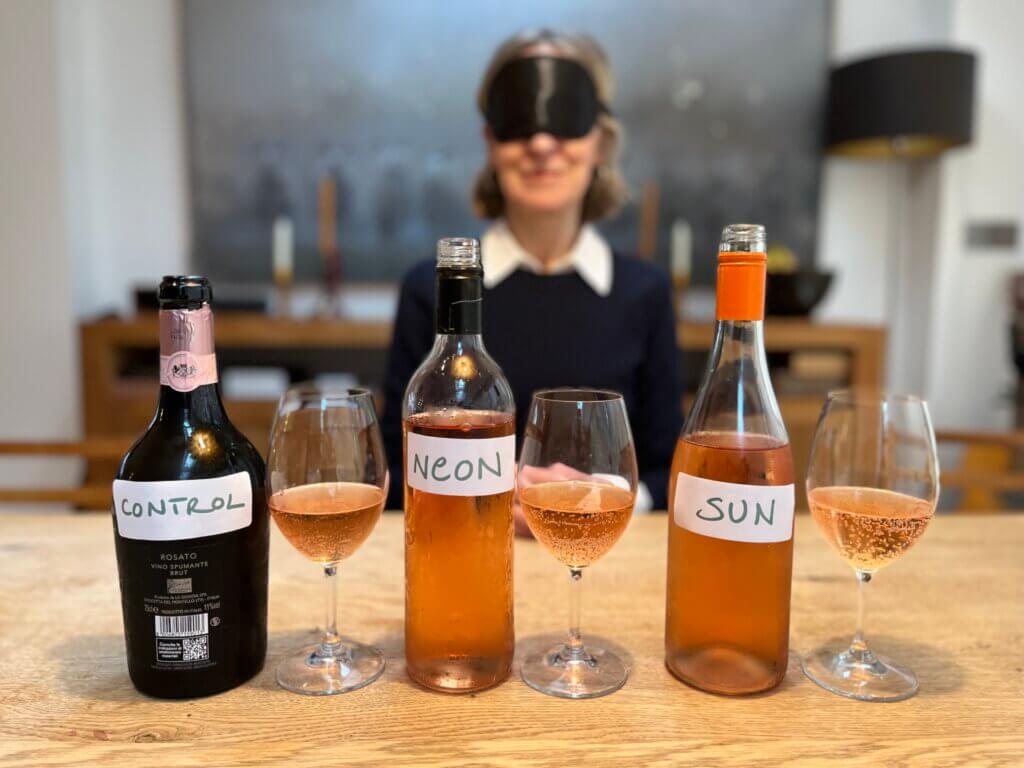
In this episode, we explain what light strike is, how fast it happens, and which wines are most at risk.
We hear from experts, including the co-author of an illuminating recent research paper, and rage against the fact that the problem seems shockingly prevalent, but so little is being done.
We even carry out our very own applied research experiment (featuring bottles, funnels, argon gas and a blindfold) which gives unequivocal results.
Finally, we call for wholesale change – from producers, distributors, retailers – and give clear advice on what we normal wine drinkers should do about all this (barricades, tyre burning and civil unrest are proposed…but not necessarily endorsed).
Postscript: this episode, and its call to arms, was subsequently covered widely in the national, even international press. See below for more details.
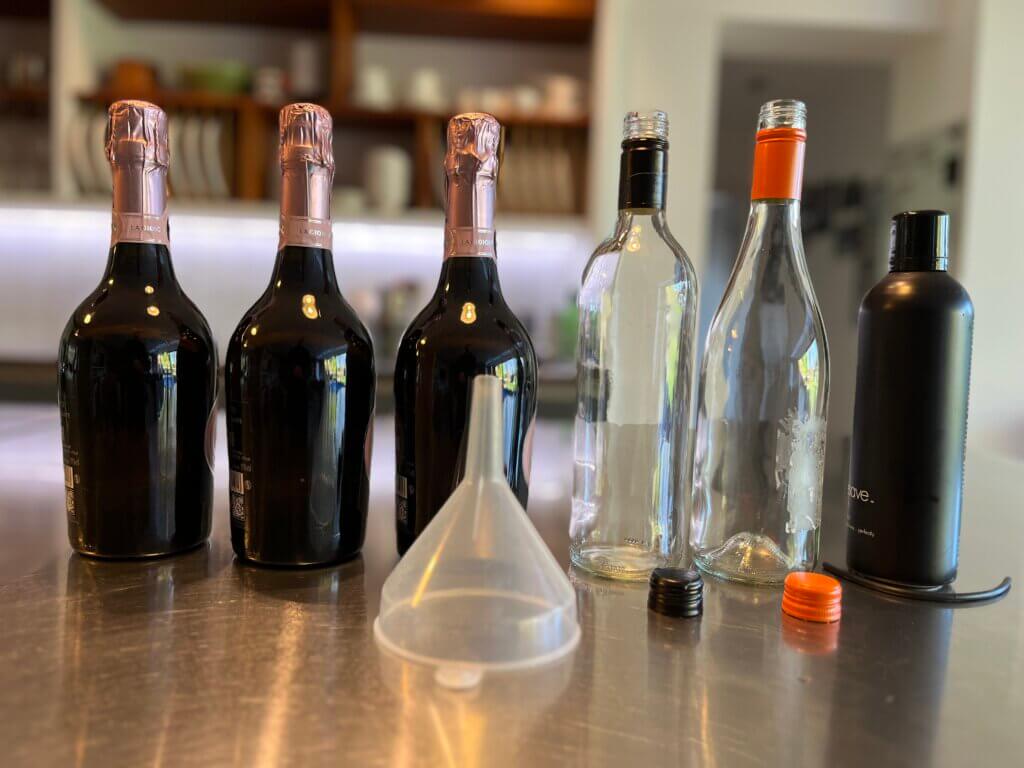
Starring
- Panagiotis Arapitsas, Fondazione Edmund Mach (Italy) and University of West Attica (Greece)
- Deepika Koushik, Plumpton College
- Liz Gabay MW
- Susie & Peter
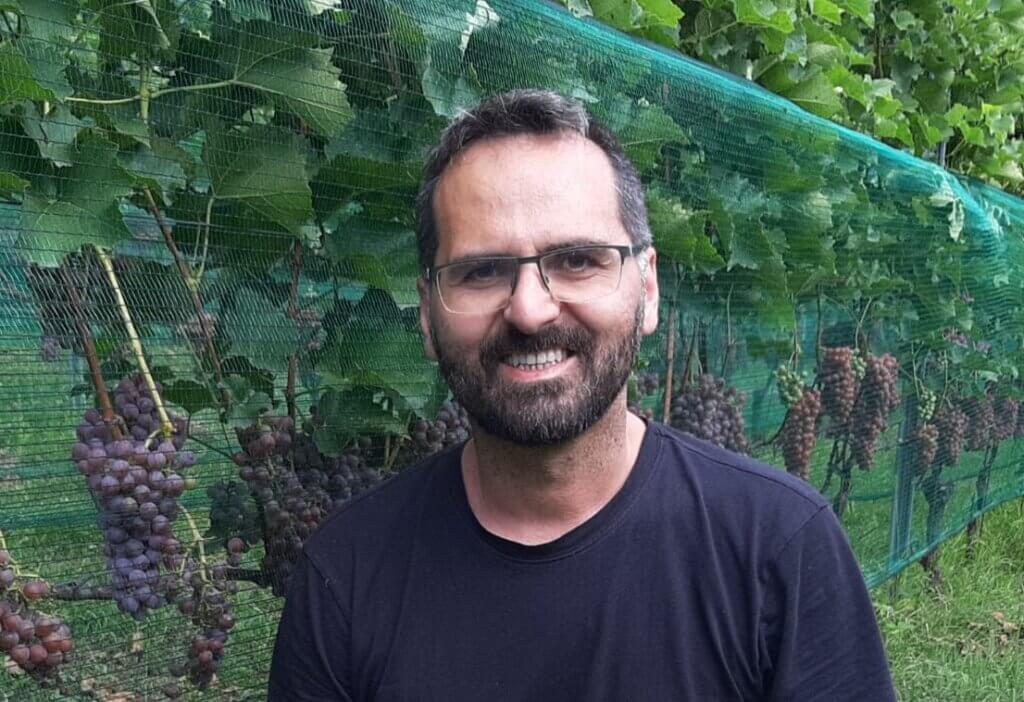
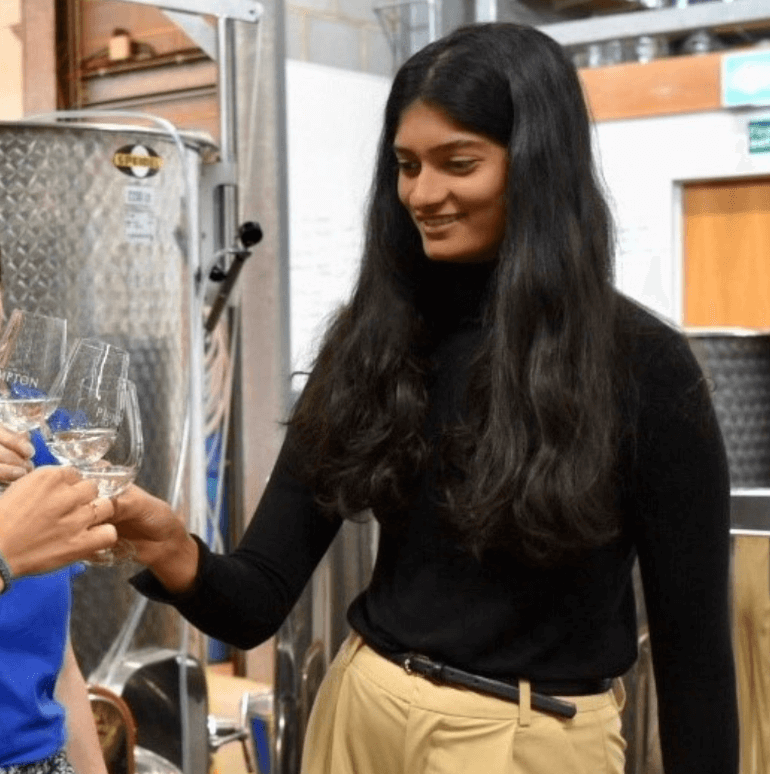

Links
- Here’s the link to the abstract of Panagiotis’ latest research paper: Flint Glass Bottles Cause Aroma Identity Degradation in White Wine
- Here’s Nyetimber winemaker Brad Greatrix talking about light strike on YouTube
- You can find our podcast on all major audio players: Apple Podcasts, Spotify, Google, Amazon and beyond. If you’re on a mobile, the button below will redirect you automatically to this episode on an audio platform on your device. (If you’re on a PC or desktop, it will just return you to this page – in which case, get your phone out! Or find one of the above platforms on your browser.)
Headlines
After this episode aired, it was picked up widely in the national press, including The Times, The Daily Telegraph and Mail Online. It even made it onto the radio (Classic FM, Times Radio) and into international headlines – Gambero Rosso covering it in Italy, for example.
Some highlights as below. We also received a great deal of direct feedback – so much so that we picked up on this in our subsequent News & Views episode.
While it’s wonderful validation for the pod (the third time we’ve made national headlines in a year), the most important thing is that this issue retains traction and the trade takes meaningful and widespread action on what is a totally preventable quality control issue. People deserve to get their wine in good condition!
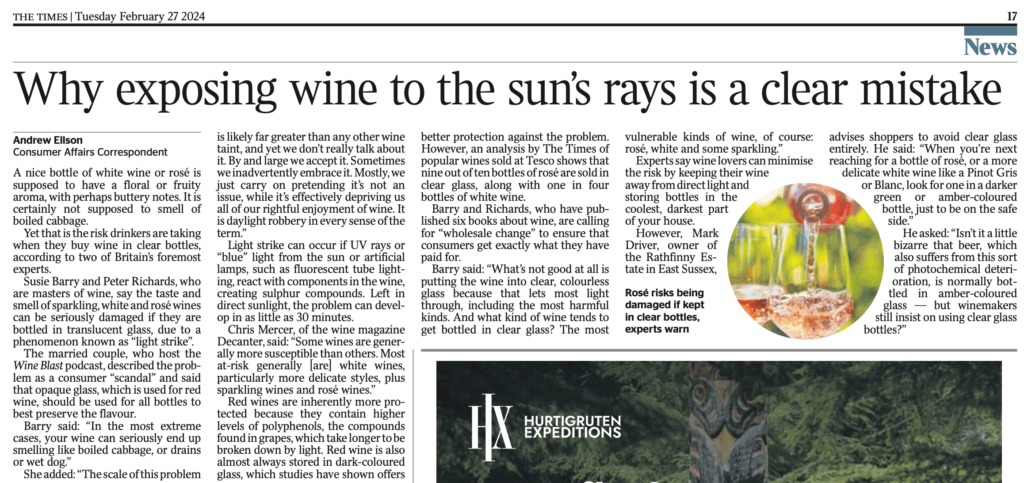
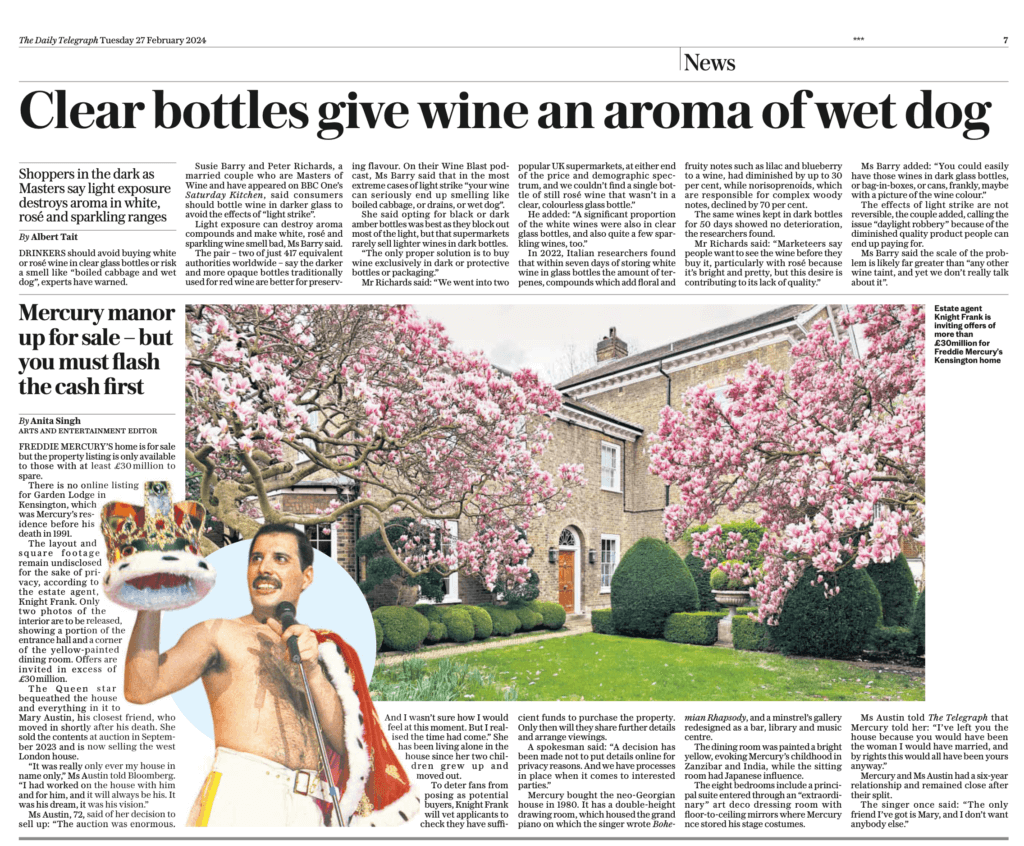
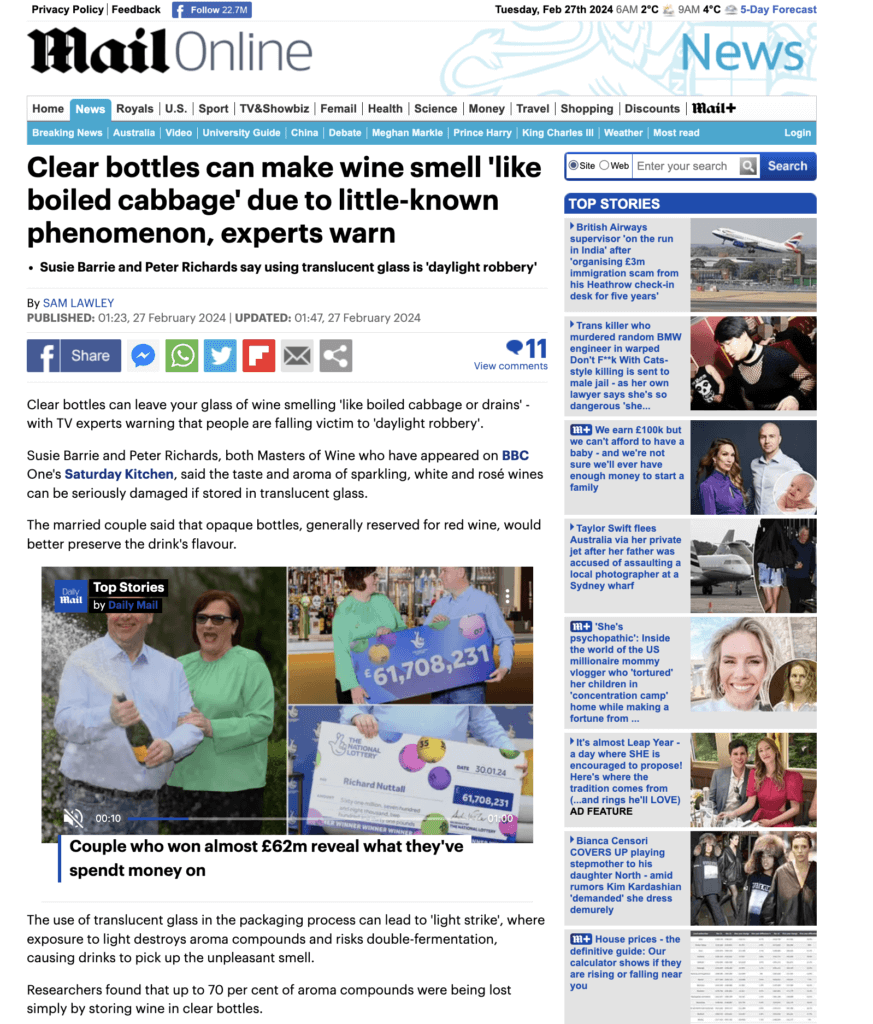
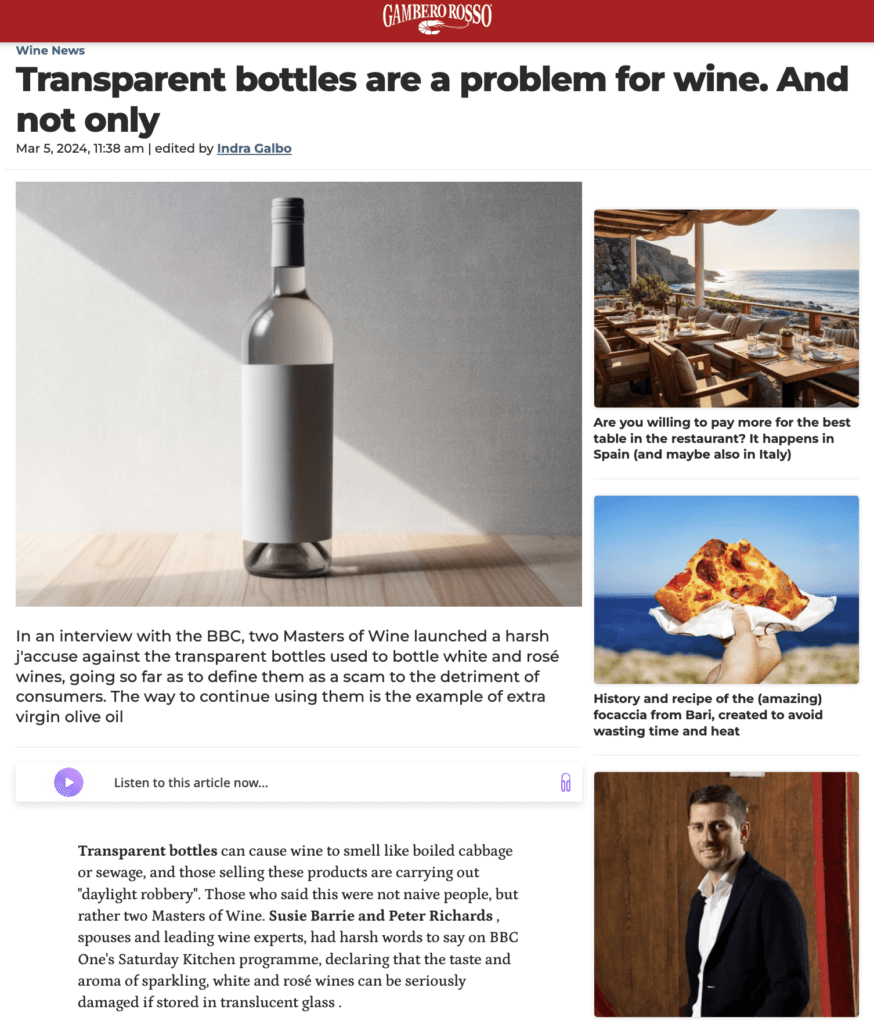
The Big Experiment
First, we went to the shops – two popular UK supermarkets. We were trying to find a still rosé in a dark glass bottle…but we couldn’t.
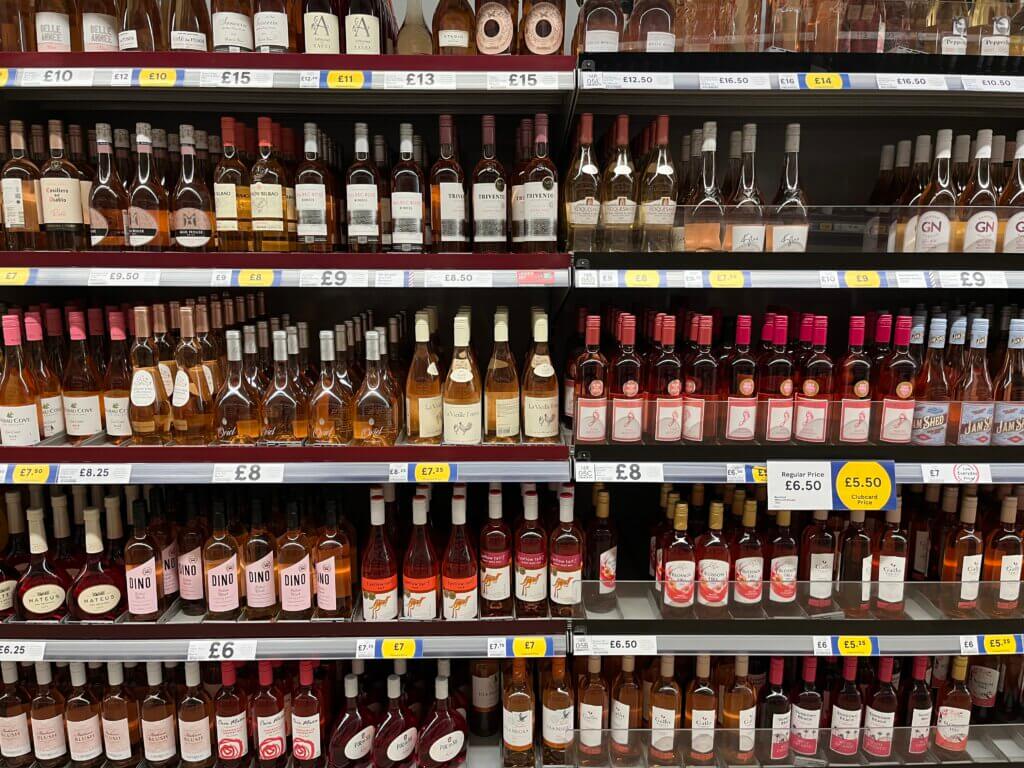
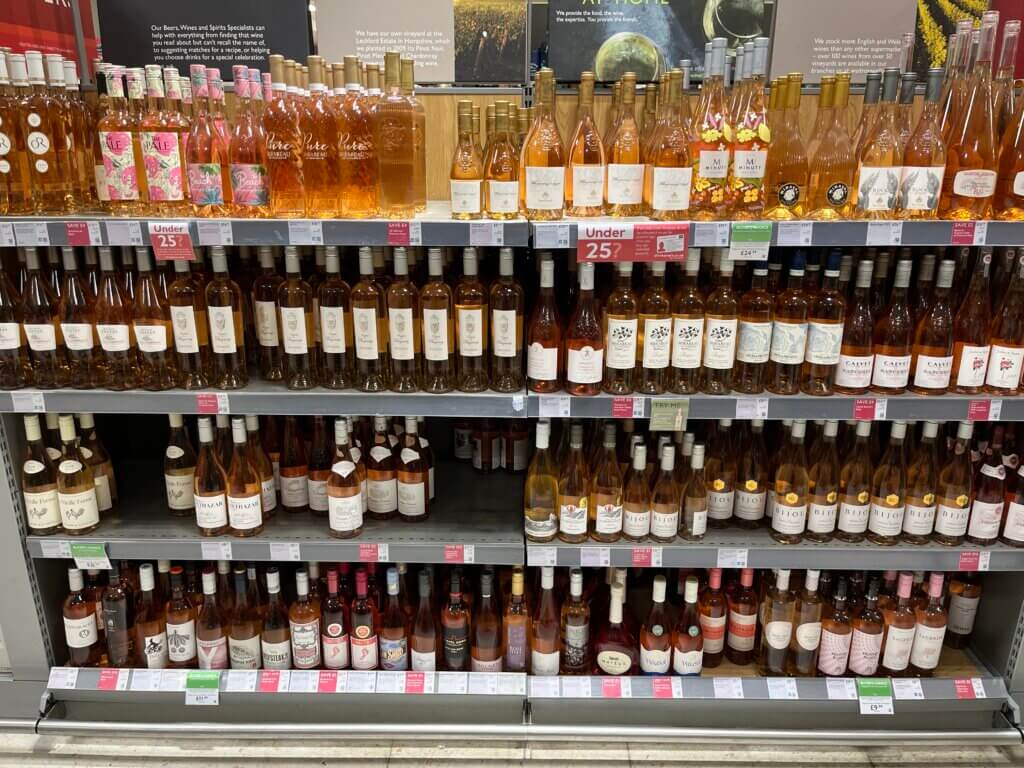
In the end we went for a rosé sparkling wine in dark glass (£9.99). We got a member of staff to find us three bottles that were still in their original box. We took them home, and decanted all three. Two went into clear glass bottles, one was put in the window and one was put near a fluorescent light. A control bottle was decanted back into its original dark bottle and put in the dark cellar. All bottles had argon gas added and were tightly sealed to ensure oxidation wasn’t an issue.
After four days, we opened the wines. Susie put on a blindfold and Peter served her the wines blind, to avoid any prejudice. You can hear the results of the tasting on the pod! The conclusions were equally sobering and unequivocal.
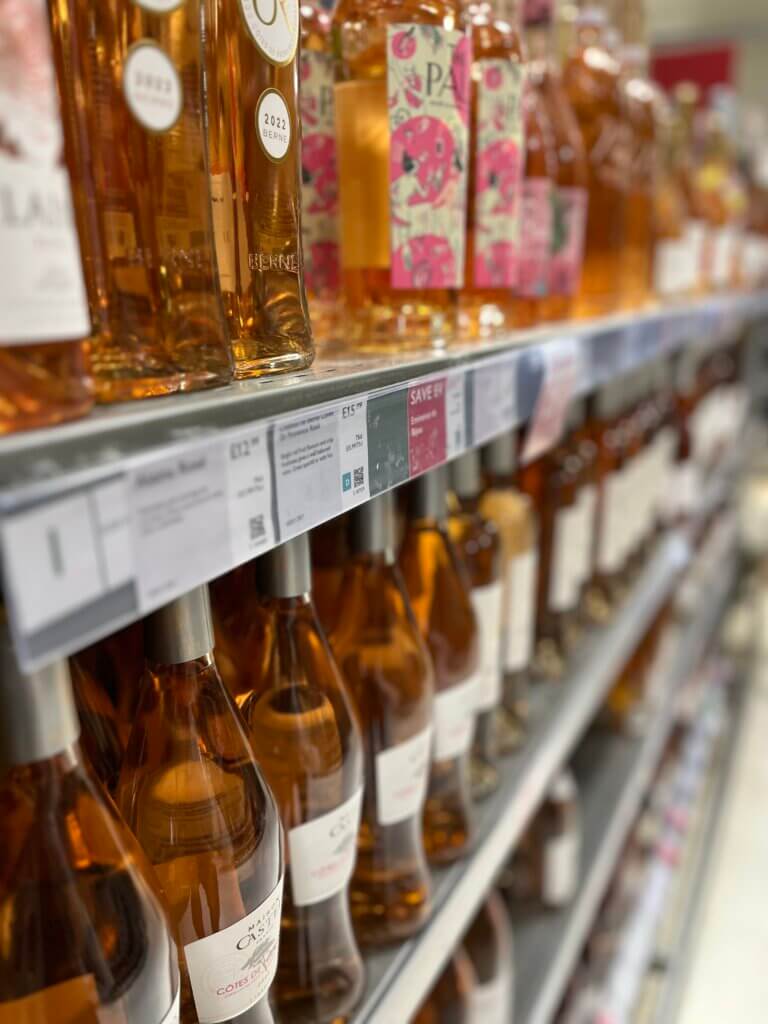
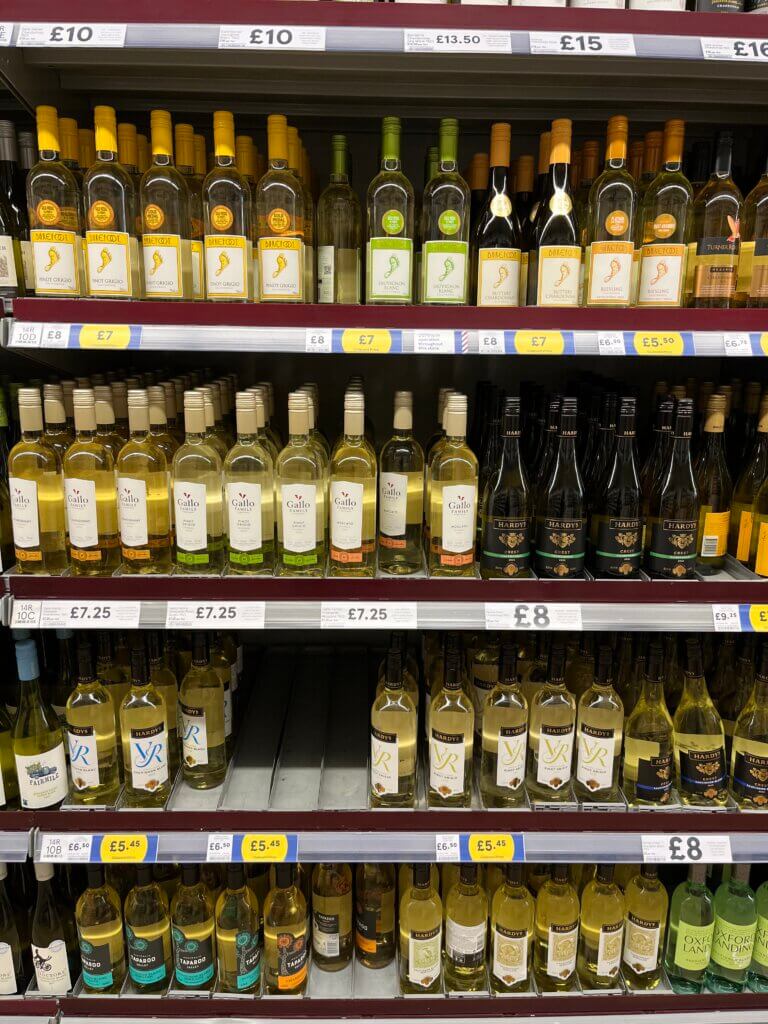
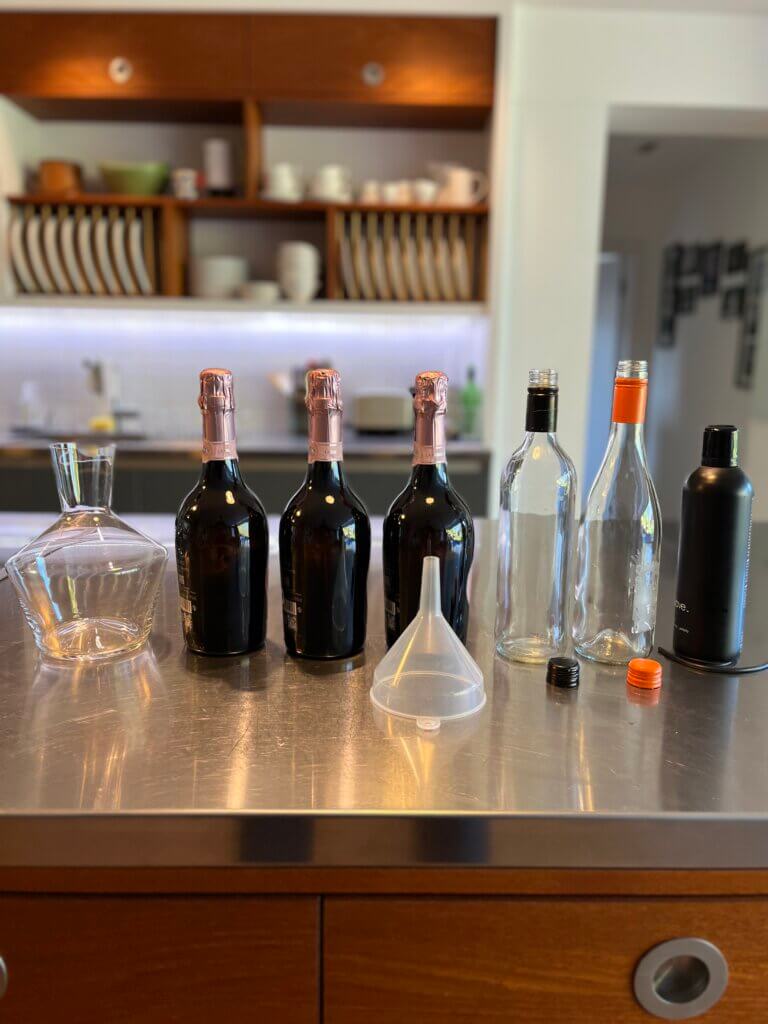
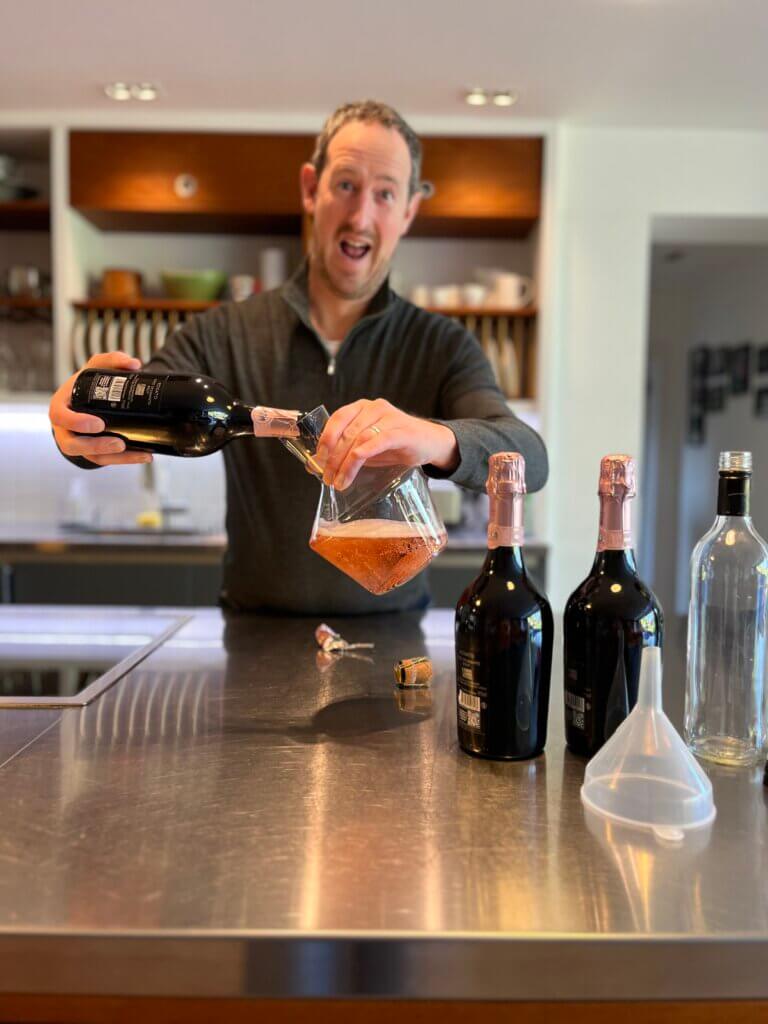
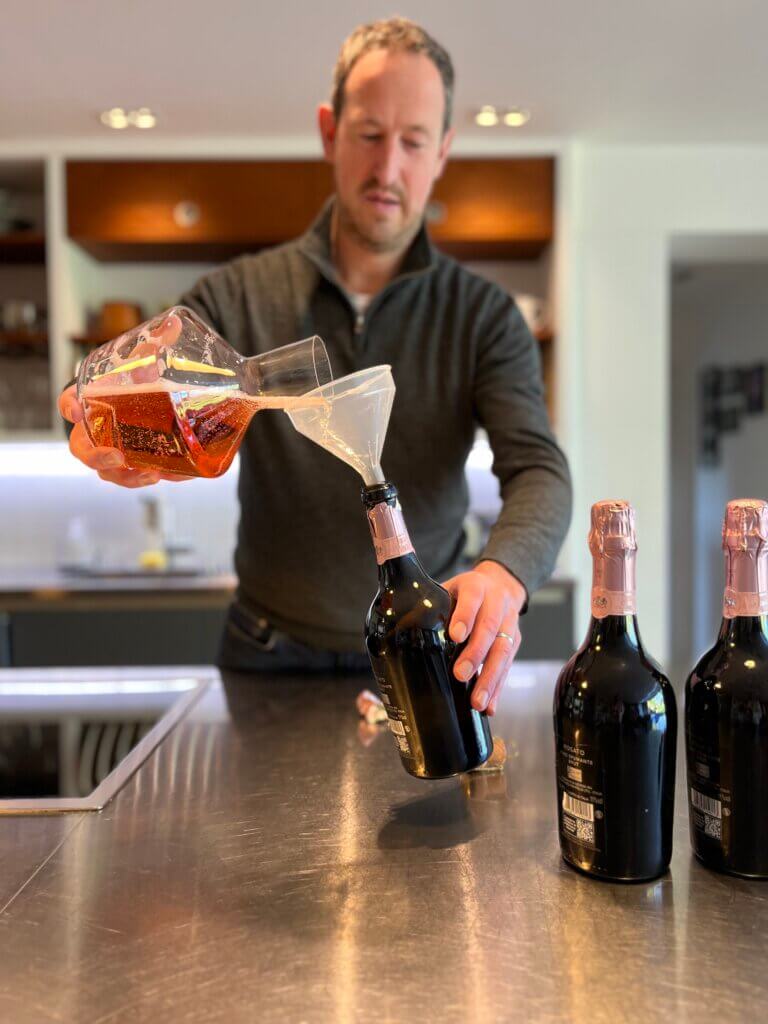
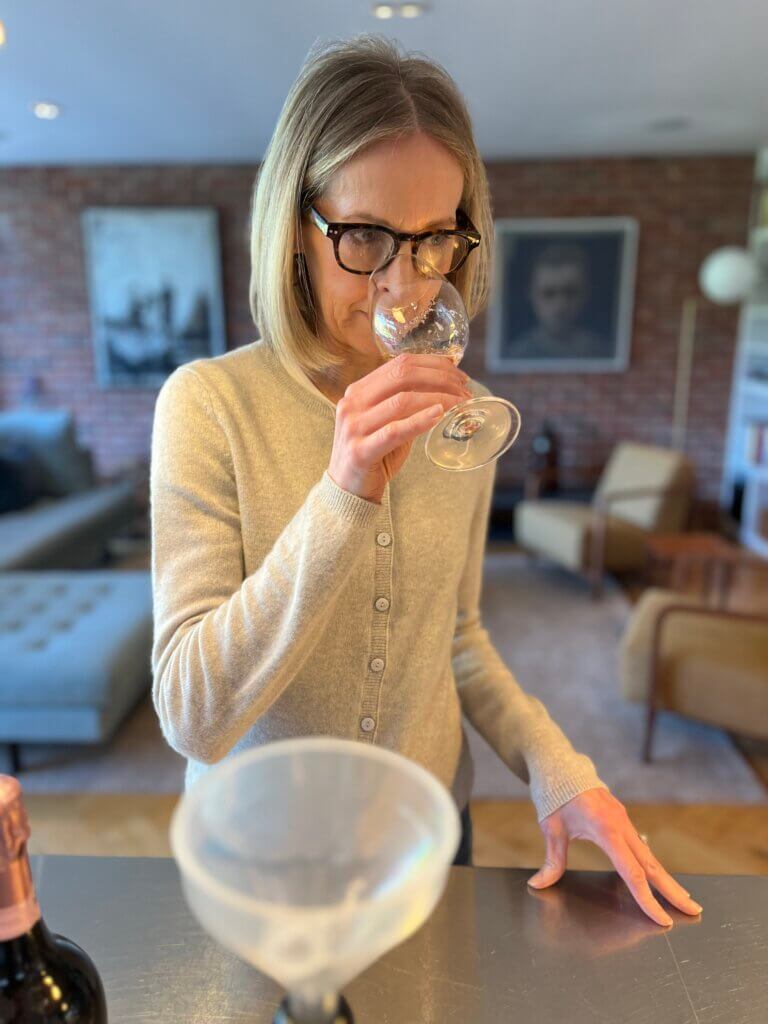
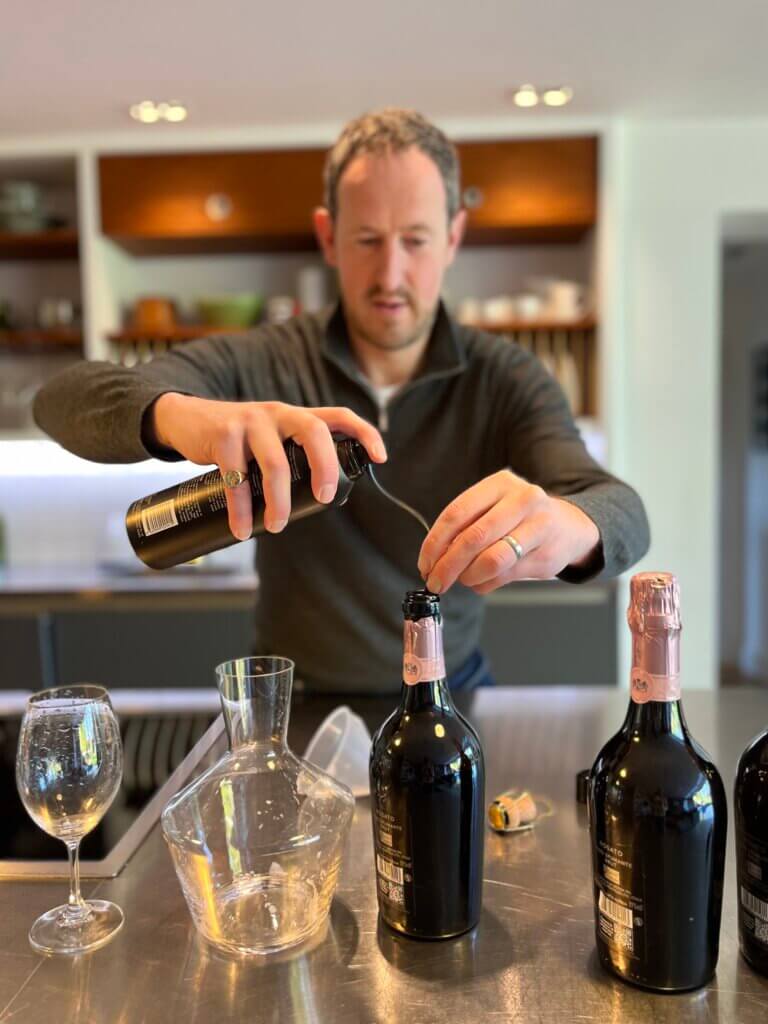
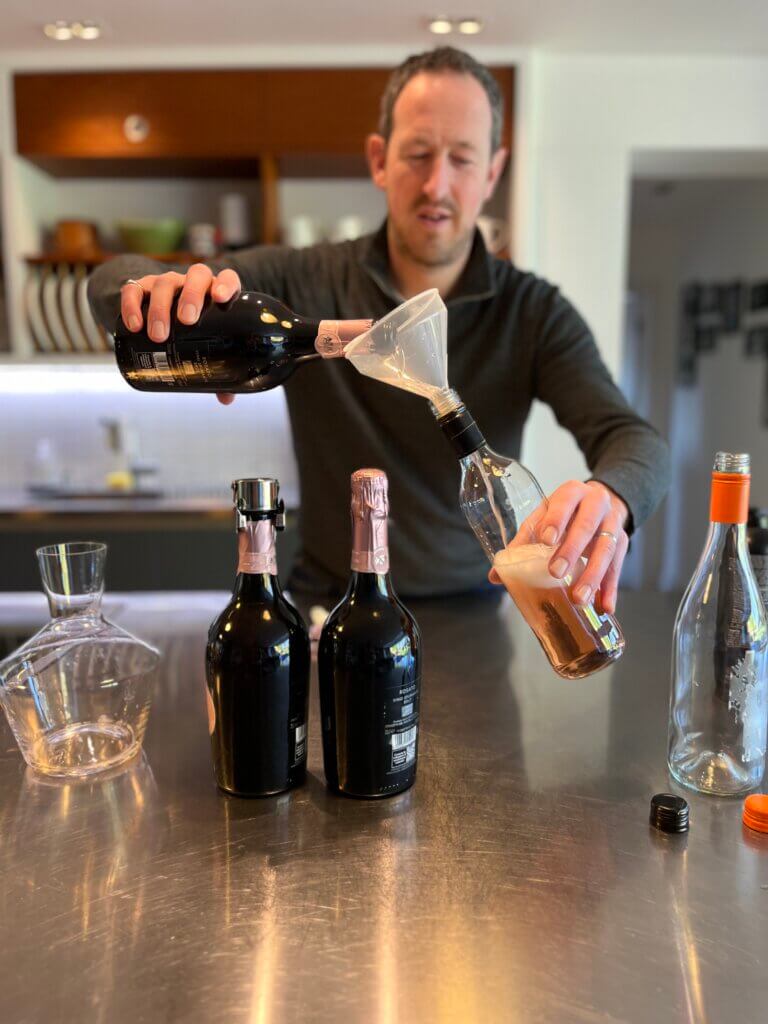
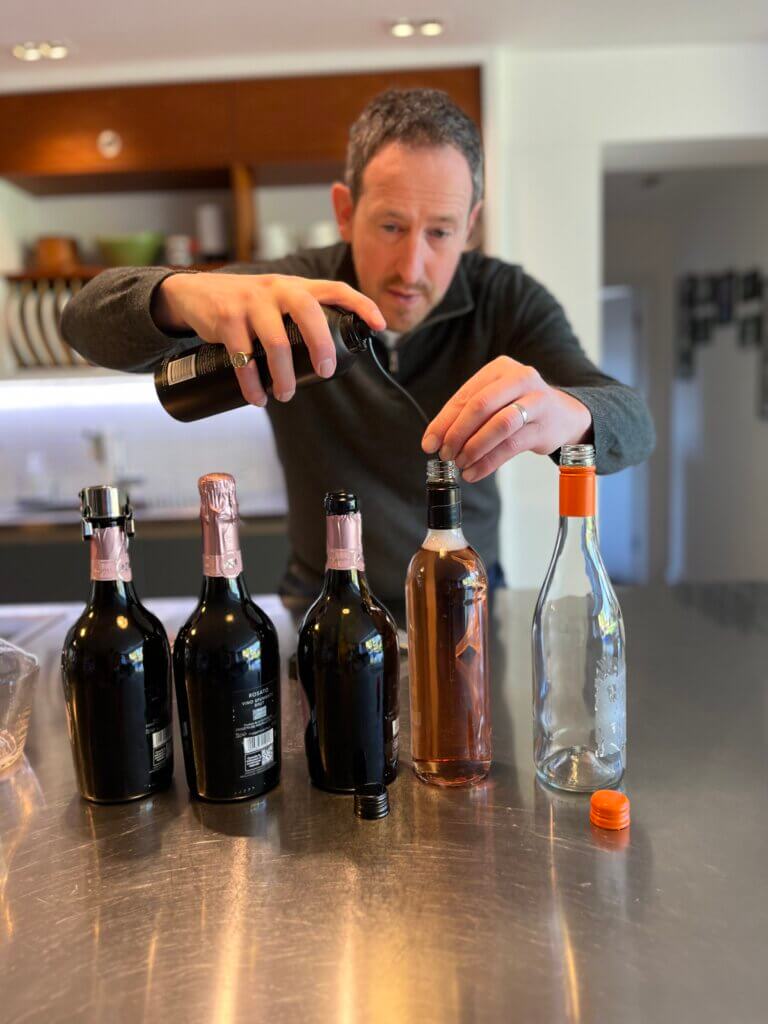
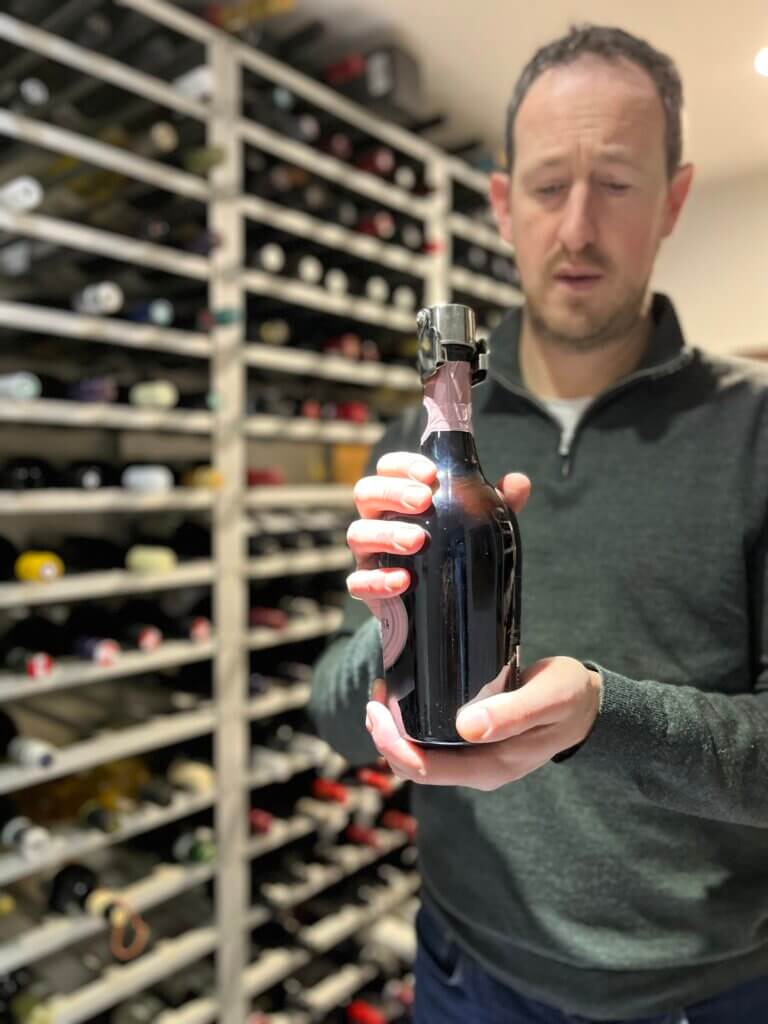
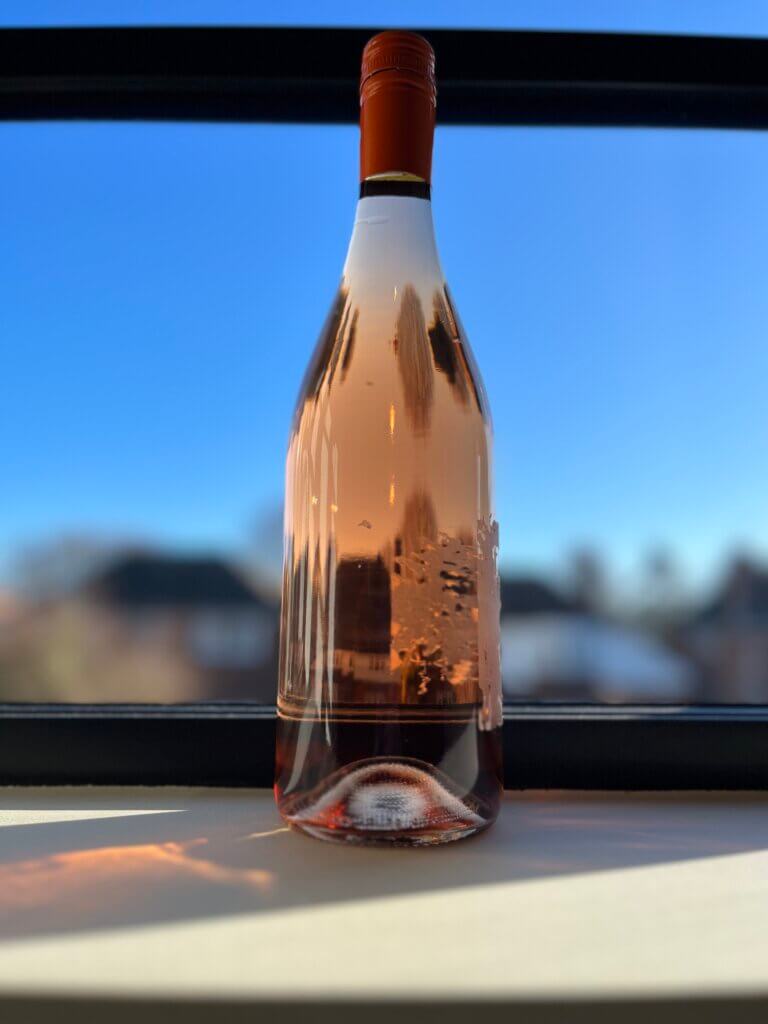
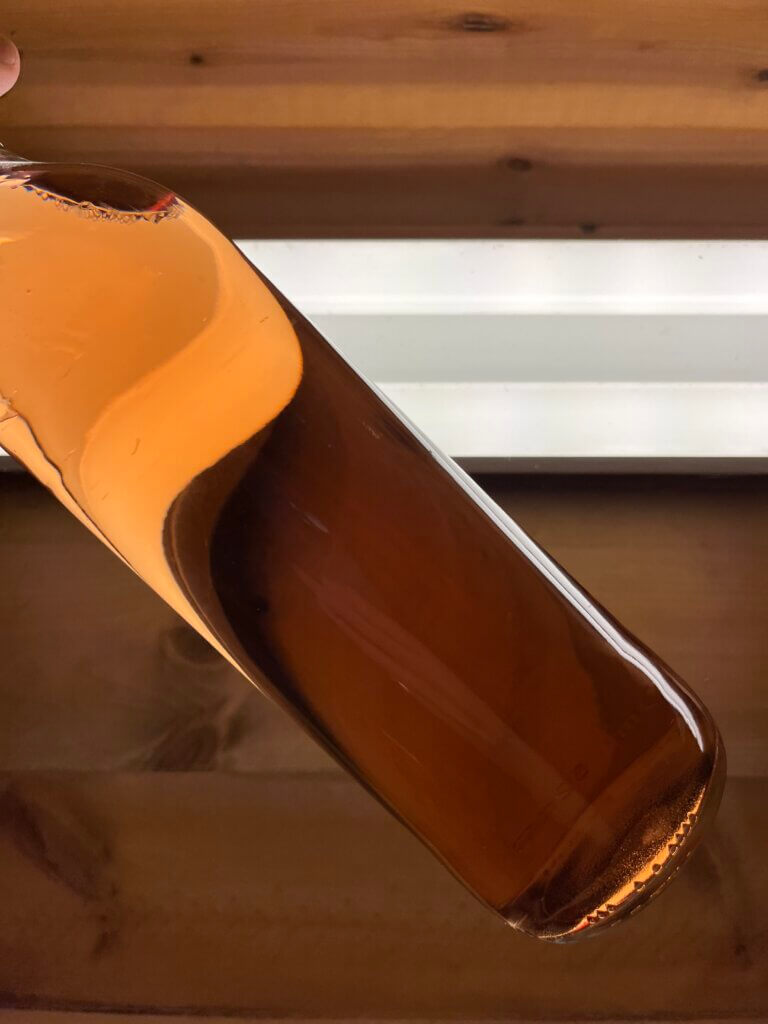
Graphics
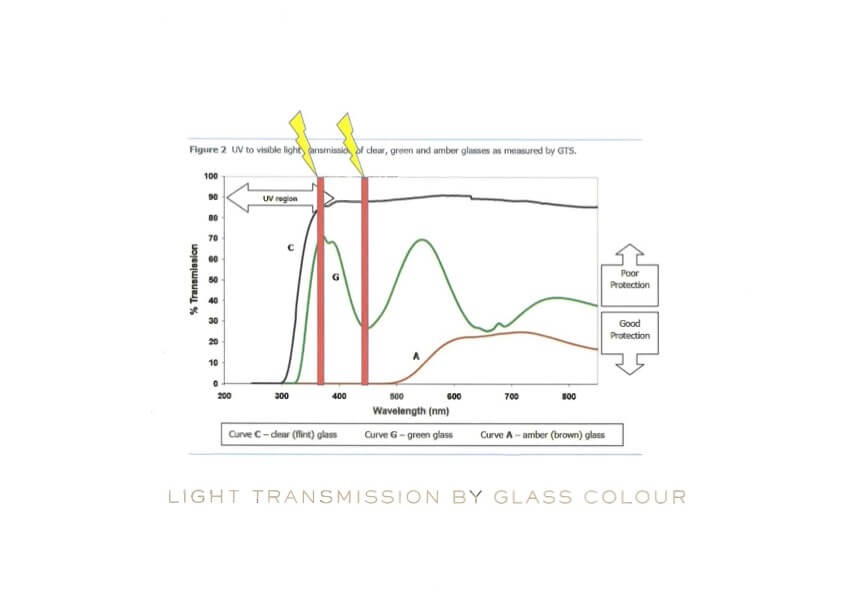
Get in Touch!
We love to hear from you.
You can send us an email. Or find us on social media (links on the footer below).
Or, better still, leave us a voice message via the magic of SpeakPipe:
Transcript
NB: This transcript was AI generated via Headliner. It’s not perfect.
This week’s wine blast features a dark story with a hint of scandal
Susie: Hello, and welcome to Wine Blast with me, Susie Barrie, and my husband and fellow master of Wine, Peter Richards. And this episode’s a bit different from the norm, because we are talking about light. There’s also darkness involved. Ultimately, we’re telling a story with a bit of science and more than a hint of scandal.
Peter: Love that cryptic buildup. I feel we should have much more ominous music playing right now. Something like the omen or whatever. Jaws. We don’t want people to think they’ve stumbled onto rom podcast. This is still Wine Blast. We’re still talking Wine.
Susie: The Wine stories will never end. But this is a particularly juicy and timely one, isn’t it? Because we are talking light strike. Now, you may already know a bit about this. You may know a lot. You may know nothing at all. But I can promise you some cutting edge research, some strong views, some eye popping numbers, and I guarantee that you’ll never look at Wine in quite the same way again.
Peter: I think I always look at Wine the same way, which is pretty adoring.
Susie: Cross-eyed I think.
Peter: Well, there’s a bit of that, but I just gaze at bottles in awe.
Susie: Just like you look at me.
Peter: Absolutely. I was just about to add that.
Susie: Of course you were.
Peter: I’m a total fanboy of Wine. And of you, of course.
Susie: Hold on a minute. It’s fair to say that you don’t look at all Wine adoringly.
Peter: M. Yeah. Do you know what that is? That is true. just like I don’t look at all girls adoringly. I’ll just throw that in there before we move on. But you’re right. and what we’re going to say in this episode is we definitely shouldn’t be looking at all wines the same way.
Susie: Exactly. Particularly those that come in clear glass bottles.
Wine tainted by light strike can lead to unpleasant smells or tastes
Yes, we have several villains in this story, and one of the prime ones is the clear, colorless glass bottle. Another is light. Also the shady, marketing men and women. As for the victims, well, it’s us Wine drinkers. Plus, of course, your poor, defenseless Wine, which should always taste as the winemaker intended, but which sometimes doesn’t. Why?
Peter: Because of light strike?
Susie: Precisely.
Peter: Light strike.
Susie: Light strike.
Peter: Sounds quite cool, doesn’t it? Light strike? Just thinking about it.
Susie: It does, doesn’t it?
Peter: Like some sort of Jedi karma laser weapon or something like that. Or one of the new, you know, someone like Margot Robbie would play light strike.
Susie: Will she ever top Barbie? That’s the question.
Peter: That’s a big question. I’m not sure it’s a question for.
Susie: No, no, anyway, light strike is definitely not good or cool. Sadly, quite the opposite. Now, to get some sort of perspective, you could put it like this. Most of us Wine folk are encouraging, whether actively or passively, the sale and consumption of Wine that is tainted. In the most extreme cases, your Wine can seriously end up smelling like boiled cabbage or drains or wet dog.
Peter: Not quite sure which of those is worse. I mean, they all sound horrific.
Susie: Now, the scale of this problem is likely far greater than any other Wine taint. And yet we don’t really talk about it. By and large, we accept it. Sometimes we inadvertently embrace it. And mostly we just carry on pretending it’s not an issue. While it’s effectively depriving us all of our rightful enjoyment of Wine. It is daylight robbery in every sense of the term, if you’re. Pardon the pun. Sorry. but I ask you, is that.
Peter: Cool, the pun or the daylight robbery? Because the pun is definitely very cool. In my world, the daylight robbery is definitely not cool. I agree. Not even Marvel can make that character cool.
Susie: No. So we’re definitely in villain rather than hero territory. I’d actually say the situation borders on scandalous and it needs calling out, which is what we are going to do in this episode. We’re going to explain what the issue is, look at the latest research findings, hear from winemakers and other experts, and recommend what should be done about it. we’ve even done our own original applied research, haven’t we? I’d say a semi scientific experiment involving bottles, funnels, argon gas and a blindfold, which was fun. And which. You too? Oh, here we go. You too, can easily replicate at home, should you so desire.
Peter: Rock and roll. It’s definitely semi scientific. I agree. I love it. What did you wish for? It’s not entirely scientific. It’s semi scientific.
Susie: Definitely semi.
Peter: You’ve also left out the fact that we went shopping. We did indeed. That was really important. It was also quite fun, which is not something I would normally say about shopping.
Susie: First time I’ve ever heard you say that about shopping.
Peter: There we go.
Susie: I’m going to hold you to it. Now, we should get started. And I’d like to kick off a bit differently by telling, very briefly, a, well known folktale, the emperor’s new clothes.
Peter: This is fun. We don’t have to have story time on the pod. I feel like I can sort of be tucking myself up and making myself comfortable.
Susie: You do whatever you like. anyway, so this story, as I’m sure many of you will know, is about a grand emperor who is obsessed with fancy new clothes. And one day, two cunning and persuasive con men see their opportunity. They convince the emperor they’ve developed the ultimate fashion statement. Clothes that are so unbelievably fine and ultra modern and avantgarde that they are invisible to fools. All those who aren’t worthy or cool enough to see them. Now, the emperor hires these men on the spot. They pretend to make the clothes and dress the emperor, who decides to parade himself around town. His officials pretend the clothes are magnificent to avoid appearing foolish. The townspeople do the same. And ultimately, it takes a small child to laughingly point out the, emperor is, in fact, totally naked to make everyone come to their senses. Everyone, that is, except the emperor, who tries to style it out. Too vain and proud to admit his foolishness.
Peter: I think I can see where this is going. either that or I dozed off for a second. Where can I buy those clothes?
Susie: Don’t you even go there! No. So, yeah, the relevance of this story may already be apparent, but we’ll be coming back to it in due course. In the meantime, we need to explain what on earth light strike is and why it’s worthy of our time and attention.
Light strike destroys wine aromas
Peter: Okay, so story time is over. Fine. light strike. Light strike is a relatively well known phenomenon, in Wine terms. It was first studied in champagne in the 1970s. Effectively, light is a friend to the vine in terms of growing grapes. But then it becomes an enemy to Wine because Wine is fragile. Essentially, light destroys Wine aromas, and in extreme cases, can result in a Wine dominated by unpleasant and slightly foul characters. The color things you’ve already mentioned, sparkling.
Susie: white and rose wines are particularly susceptible to light strike. Red wines are more protective because of their naturally higher levels of polyphenols. Now, what causes it are chemical reactions triggered by light, particularly certain wavelengths of light. So this needs, I think, a tiny bit of explanation. light comes in many different forms. Some invisible, like UV light, some visible, ah, depending on their wavelengths. Because light travels in waves. The kinds of light that are most damaging to Wine are those with shorter wavelengths in the UV-A range of the spectrum, which is invisible, and then visible light in the blue range of the spectrum. Now, for the light geeks out there, that is apparently around 370 to 440 nanometer wavelength.
Peter: Do you think there are as many light geeks out there as Wine geeks?
Susie: I don’t know. Maybe. They might not be listening.
Peter: Say hi if you are. We’ll put a graphic or two up on our show notes. I think to make this simpler to understand, because it is quite complicated and it helps, actually, when you see it in visual format. But anyway, in practical terms, which is the main bit, daylight, even through clouds and bright white interior lighting, like fluorescent lights, are particularly damaging to Wine. And what kind of lights do you tend to get in supermarkets?
Susie: Now, there is an easy way to prevent this whole problem happening. You protect the Wine from light, both in the winemaking process and then once it’s been packaged for sale. And if we’re talking bottles, which is the reality for the vast majority of Wine, that means the darkest possible glass, black or dark. Amber, is best because it blocks most light, particularly the most damaging wavelengths that we’ve mentioned.
Peter: What’s not good at all is putting the Wine into clear, colorless glass, because that lets most light through, including the most harmful kinds. And what kind of Wine tends to get bottled in clear glass? The most vulnerable kinds of Wine, of course, rose, white and some sparkling. And because these clear Wine bottles will almost certainly see some light in their journey from the winery to your glass, in some cases for pretty extended periods of time on the shelf or in the shop window, then the wines will almost inevitably be affected by this problem to some extent.
Susie: But what’s the big deal? I hear you say, if it’s such a big issue, how come I’ve never come across it? Surely you’re overhyping this or there’d be more complaints and returned bottles.
Flint Glass bottles cause white wine aroma identity degradation, study finds
Well, this is where we wheel out the research, the evidence, if you like, principally in the form of winemaker, researcher and assistant professor Panagiotis Arapitsas co author of a recent paper entitled Flint Glass bottles cause white Wine aroma identity degradation. Now, where he uses the term flint glass, we’re using the term clear glass probably inappropriately.
Peter: Well, I think we always try to be as inappropriate as possible, generally.
Susie: I think we all know what we’re talking about.
Peter: Hopefully, we all know what we’re talking about. Anyway, this paper is fascinating for many reasons. it’s the result of experiments that have been going on over many years now, I think about ten years. so it’s not just some sort of flash in the pan. They’ve used more than 1,300 bottles of Wine in these experiments. A fair bit of gas chromatography to measure volatile compounds. Lots of good old fashioned tasting. And no doubt, a fairly hefty electricity bill from all the lighting, too. it definitely sheds new light on what it. Oh, no, sorry. That was inadvertent pun. Just flagged the inadvertent pun. Gong. sorry about that. on what is exactly going on with light strike and how quickly, more importantly, it can happen. This is really intriguing, you research. So panagiotis and his co authors studied four kinds of still white Wine. Chardonnay, Muller-Thurgau Gewurztraminer and pinot gris or pinot grigio, all bottled in clear flint glass bottles and all exposed to light. This is what they found.
Panagiotis Arapitsas: What we saw was that especially for Chardonnay and Pinot gris, we measured their aroma, their aroma profile, the chemical. We did a chemical analysis and we measured the aroma profile. And in the beginning, we could distinguish them very easily. But after two months, they seem identical. So, Chardonnay and Pinot Gris after chemically, after two months in flint glass, they seem identical. So we couldn’t identify which Wine was pinot Gris and which one was Chardonnay So loss of identity and for that was a big thing to continue. And we wanted to see how fast this is happening. So we did a kinetic experiment, and then we sampled wines after two days, one week, two weeks, three weeks, up until 50 days. And what we saw was that, the biggest changes are, happening within seven days. So most of the changes are happening extremely fast. And that was a big shock for us. So the aromas that are coming from the grapes, that usually are terpenes and norisoprenoids we saw that, after seven days, they decrease about, like for terpenes, between ten to 30%, and for the norisoprenoids up until to 70%. So in one week, we were losing a huge amount of these aroma compounds that are coming from the grapes that are the identical aroma of the aroma compounds of the cultivar. What makes, like, Chardonnay Chardonnay What makes, pinot Gris Pinot Gris So what is happening with this light strike? What we find out that we are losing the identity of the one.
Susie: Okay, so this is a really important point, and it goes to the question we posed earlier. If this is such a big problem, why don’t people notice it more? Panagiotis talks about terpenes and norisoprenoids These are floral and fruity aromas. They’re exactly the compounds that give grapes and wines their unique character, their beauty, if you like. And he’s saying that when bottled in clear flint glass wines can lose up to 70% of these characters, all because of light strike.
Peter: 70%.
Susie: 70%. I mean, this was surely the most interesting and shocking finding of their research. And the wines lose their identity as a result, chardonnay and pinot grigio becoming indistinguishable, essentially becoming generic white Wine.
Peter: Yeah, I mean, I agree with you. It is. Yeah, it’s sobering. I mean, when I talked to him, panagotis also cited the example of beta, damascenone which is a norosophrenoid, very typical in chardonnay. by itself, it smells like, flowers or roses or baked apples. and what this research gets into, intriguingly, is the interplay of compounds in Wine. panagiotis, called Wine, the richest food we consume in terms of number of metabolites. And what beta damascenone also does is accentuate and enhance other positive aromas and compounds in the Wine. And yet, beta damascenone is one of the most sensitive compounds to light. So one that was lost fastest to light strikes. So we’re not just talking about the loss of individual aromas here. We’re also talking about the loss of the most fundamental building blocks of the whole Wine. Light is crumbling this whole edifice, this building of a Wine.
Susie: But I think the key thing here is that this is about a dampening effect. The light strike is muting a Wine. I mean, it’s like playing your favorite song through a pillow or through white noise. Now, with your favorite song, you notice the difference because you know it so well. But with the Wine, chances are you don’t know it that well. Only really, the winemakers, maybe a couple of very committed superfans, know what it should taste like.
Peter: Yeah. So you could, for example, drink a chardonnay that’s been sitting in a clear glass bottle on the shelf or in the window for weeks, and you might think it’s okay. It’s nothing special. It’s a bit dull, but it’s doable, for want of a better word. But the reality is, before it was bottled, that chardonnay tasted great. It was full of life and vibrancy and lovely flavor. You just don’t know the difference.
Susie: And this is what’s so frustrating and wrong, because you’ve paid good money for that Wine. You deserve to have that product in top condition, and it’s not. So, in effect, you’re getting ripped off because of the decision to put that Wine in clear glass. And the worst bit about it is it sails under the radar. Ah. Precisely because people don’t know any better.
Peter: It’s like a stealth tax on our enjoyment, isn’t it?
Scientists say light exposure can lead to degradation of good smells in wine
And Panagiotis also said that their research has shown it’s the suppression of the good smells and character in the wines that makes the off smells become more prominent. So the whole wet dog or boiled cabbage thing, which come from sulfur containing compounds like dimethyl sulfide, are partly emerging in the Wine because the good smells are being degraded or muted, as you said.
Susie: Yeah. And he said these things happen really quickly. Didn’t know within seven days for the biggest effect.
Peter: Absolutely. And some other people report it happening in a matter of minutes. but crucially, panagiotis added two things. Firstly, that the effects are not reversible. So buying a light struck Wine and putting it in the dark won’t help. It doesn’t matter how well you store it after it’s been struck by light won’t help. What’s more, the effects are additive or cumulative, so more exposure means the problem just gets worse. and you may well not know what’s happened to that Wine in the winery or anywhere along the supply chain.
Susie: Before you get hold of it. Really, the only proper solution is to buy Wine exclusively in dark or protective bottles or packaging. But what did we see when we went shopping?
Peter: Handbags. Lots and lots of handbags. No, sorry, that’s a recurring nightmare I have. That’s just different. We went into two popular UK supermarkets this week, didn’t we? let’s say at either end of the price and demographic spectrum, we couldn’t find a single bottle of still rose Wine that wasn’t in a clear, colorless glass bottle, could we?
Susie: No.
Peter: In other words, every single still rose Wine was in a clear, colorless glass bottle. A significant proportion of the white wines were also in clear glass bottles. And also quite a few sparkling wines, too, particularly the rose sparkling wines.
Susie: Yeah, we did take pictures, didn’t we? Put them on our show notes. But this isn’t unusual. In fact, it’s the norm. And it’s not just supermarkets, to be fair, similar things happen in bars and restaurants and probably our homes too. Actually, we were told, an alarming tale, weren’t we, by a top, top champagne producer of, how they were delighted a few years back when their best vintage wines were listed at one of London’s swankiest new restaurants, which happened to be one of those with lots of big windows. And when they visited, they found their wines sitting there in the full glare of the sun and daylight. And the wines were utterly ruined. But they were still being sold to unsuspecting punters.
Peter: It’s shocking and it happens all the time. right, I think we need to take a breath, have, a pause let all of this sink in. coming up, we’re going to be donning our safety glasses and blindfold for our sobering experiment. we’re going to hear more from panagiotis and other experts as we reveal the true potential scale of this issue and give her our advice on what should be done about it.
Light strike destroys aromas and character in white, rose and sparkling wine
To recap so far, light strike is an insidious Wine fault. It destroys aromas and character in white, rose and sparkling Wine. In clear, colorless glass bottles. It can happen surprisingly fast, and it’s irreversible. It’s a serious issue, but one that is neither widely recognized nor given the attention it deserves. This has to change.
Susie: And yet it seems we see more and more wines in clear glass rather than less. So the question is, why is that? Why are wines put into clear glass in the first place? So we asked panagiotis, flint glass is.
Panagiotis Arapitsas: Something, that probably we shouldn’t use. And the problem, it comes from us as a consumer. So I’m a consumer also myself. And usually what they say is, when we go and we buy a product, we want to see the product. And we believe that if we see the product, we can check the quality of the product. I don’t know any winemaker that wants to put its Wine in a flint glass. So usually it is due to the marketing options that they will tell you, you know, consumers want to see the product. so you have to put it in flint glass. And usually that happens with, low, budget Wine, like between, I don’t know, €4 and €10. The production of a clean glass, apparently, it seems that, it costs less than a colored one. This is, a huge problem. Yes.
Peter: So it’s basically down to marketing. the marketeers and the retailers are saying people want to see the Wine before they buy it, particularly rose, because I guess it’s pink and it’s pretty. So the blame is being shifted to us, the people who buy the Wine. and to a certain extent, we are to blame because we keep buying the stuff and we don’t want to talk about or recognize or push back against, the potentially very significant downsides. And this becomes a vicious cycle.
Susie: It certainly does. Yeah. So this supposed desire to see the Wine, to check its quality, is, ironically contributing to its lack of quality. The science is clearly telling us this is an issue, and yet you literally can’t buy a single still rose Wine in a supermarket that’s not in a clear bottle. There’s not even a choice.
Peter: Yeah. And there’s also, the nagging question of whether this is being driven by cost, too. If clear, colorless glass bottles are cheaper than the darker ones. And, it’s often the cheaper wines that are used for, isn’t it? So, question marks there. Anyway, there’s no actual need to see your Wine before you buy it either. It’s not always a helpful guide to its quality or style. Anyway. certainly not enough to justify putting its quality at significant risk. I mean, I don’t need to see my crisps or cheese or whatever. I’d rather they just tasted good when I opened them.
Susie: Particularly cheesy crisps. No, but you could easily have those wines in dark glass bottles or bagging boxes or cans, frankly. Maybe with a picture of the Wine color either on the label or the shelf. Barker. or some fancy QR code video type thing, I don’t know. Or even just what about some sacrificial display bottles? And then put the Wine for buying in a dark bottle or a box or protect it somehow.
How big an issue is this? How worried should we all be
Anyway, we’re going to come on to, solutions and recommendations in a moment, but for now, we wanted to talk a bit more about the scale of.
Peter: This issue and talk about our experiment, too. Don’t forget experiment. Very, very important in all this. I’ve got my safety goggles standing by.
Susie: I got my blindfold.
Peter: Do love a pair of safety goggles. Keep focused. So if we recognize that this problem sails under the radar. but given the amount of Wine you see in clear, colorless glass bottles on the shelves, it’s potentially quite widespread. How big an issue is this? How worried should we all be?
Susie: Ah.
A third of rose wine in clear bottles may be spoiled by light strike
Peter: So we put this question to a few people. One was Liz Gabay a fellow master of Wine and renowned rose Wine expert, whom I asked what the proportion of rose Wine spoiled by light strike is.
Liz Gabay: Hi.
Peter: And when you say hi.
Liz Gabay: So if we’re doing a tasting, I would say 30%.
Peter: So a third of all rose, in your opinion, in clear bottles is spoiled.
Liz Gabay: Yes.
Peter: So if you’re going to describe this in very basic terms for our listeners, what should they look out for? In terms of if they buy a rose in a clear bottle, what would be the warning signs of light strike? What would they.
Liz Gabay: So when it’s just beginning, you can get that slightly savory vegetable herbal character, which does give some complexity. And that just gets stronger and, stronger till you get that school cabbage smell. and then you just know that it’s not right. I mean, when I first started tasting rose, I thought the same. I thought it’s the garrigue, the famous garrigue flavor of Provence rose. And now I’m beginning to think, actually, I think it’s light strike invariably.
Susie: And that savory vegetal character presumably is likely to be the floral, fruity character being suppressed, like Panagiotis said. But 30%, a third of rose spoiled, according to Liz. I mean, that’s really interesting.
Peter: Yeah. Concerning, I’d say. and she tastes probably more rose than anyone else in the world. I also asked panagiotis how big an issue this is.
Panagiotis Arapitsas: I was talking once upon a time with some, people that they organize big exhibition of Wine in Italy. And he was saying that 80% of the wines that they were tasting, in exhibition Wine exhibition in Italy, that they were in flint glass, they had the problem. So 80%, 80%, 80%, 80. But many people, they just don’t, since they are not able to recognize the problem, they think that it’s not there. That’s why it’s important to start to learn how to recognize the problem. So it’s huge. Sometimes they will develop the problem after two days, some others after one month, some after three months, four months, five months, it will happen. You cannot avoid that and you cannot turn back.
Susie: So Liz was talking about rose Wine. Panagiotis is talking anecdotally about one experience with all Wine styles in clear glass. But that’s 30% to 80%, however you look at it, that is not trivial.
Peter: No. And it’s hard to get an accurate number until people do the proper trials on this, of course. But the more you piece this together, the more worrying these potential numbers become. we’ve also been in touch with Wine writer and sparkling Wine expert, Tom Stevenson, founding chair of the champagne and sparkling Wine world championships. about this. And he said, he introduced a safeguard of double bagging clear glass. Sounds a bit weird, doesn’t it? But I’m just going to say it. Double bagging clear glass bottles in black plastic for the competition in 2015. And since doing that, the number of faulty bottles has dropped by 94%. the rest presumably being light struck before the bottles got to the competition.
Susie: And if you think, just thinking about it, we Wine people, we get our nickers in a twist about cork taint, which affects what, anywhere between two and 8% of wines with a cork? Yeah, actually, probably less now, given the advances in cork technology and production. And we get worked up about other potential faults like oxidation or britannomyces spoilage or refurmentation. In bottle or whatever, which are all pretty rare.
Peter: I actually met someone recently doing her master of Wine gestation on mousiness. Taint in Wine. can’t be the easiest to study.
Susie: No. I think I feel quite grateful for having done champagne now. But, yeah, the evidence and reports would suggest that light strike is a far bigger issue than any of those others.
Certain types of wine are more susceptible to light strike than others
and talking of champagne, actually, we haven’t really discussed that yet, but sparkling Wine is relevant here too, isn’t it?
Peter: Absolutely. So one of the institutions that’s worked hard to communicate the dangers of light strike is Plumpton College, the UK’s main Wine school and research centre. and it’s particularly relevant to them because the UK specializes, of course, in traditional method sparkling Wine. So fizz, that’s made typically by longish maturation in the bottle with leaves or dead yeast cells. I asked Plumpton winemaker and winemaking instructor Deepika Koushik who has a background in microbiology, whether certain types of Wine were more susceptible to light strike.
Deepika: I think so, yeah. sparkling definitely is a whole lot more susceptible than stills.
Peter: Why are sparkling rose particularly susceptible?
Deepika: Actually, sparkling? Both are pretty susceptible, but, it’s just the yeast that do the second ferment. They release a lot of one of the precursor molecules, which is, riboflavin, vitamin b, two. So they just tend to release a whole lot more as a part of their fermentation process. And, there are things you can put in to try to reduce the possibility of those sulfur compounds coming out. But because they spend so much time with that yeast, please, it just increases the chances of it happening. And there’s not much you can do because it’s happening in bottles, a traditional method.
Peter: That’s really interesting. So those yeasts for the second fermentation are releasing a lot of the precursors that then are, converted by the light into these horrible smelling things.
Deepika: Yes.
Peter: Okay, so you’re thinking about, with traditional missions, you’re talking about champagne. you’re talking about lots of english, most english sparkling Wine.
Deepika: yeah. I think maybe the charmat method might be slightly better. But even they age their Wine with the yeast leaves and tanks for some time, so that’s also at risk.
Susie: So by charmat, she means tank method sparkling Wine, like prosecco or english Wine made that way, too, which we’re starting to see more and more of. but it’s really interesting, isn’t it, that the traditional method, fizz, can be more susceptible to light strikes?
Peter: It really is. I know I wasn’t really aware of this. I thought still rose or white would have been the most vulnerable kinds of Wine. But it turns out the traditional method, fizz, is very susceptible. I think the thinking is, and let me see if I can get this right, is that light causes riboflavin and other photosensitive B vitamins to react with sulfur containing amino acids like methionine and cysteine. and that creates these foul smelling compounds like dimethyl sulfide and methanethiol plus, the bubbles in the fizz can then accentuate that character aromatically in the glass.
Susie: Now, that is getting a bit technical. Quite technical. So, in layman’s terms, shall we say, maturing a Wine with the yeast lees is fantastic for flavour and texture and complexity. It’s what makes the greatest sparkling wines great. But it’s a huge Achilles heel if you’re going to then expose that Wine to light.
Peter: Yeah, so the solution is pretty obvious, though, isn’t m together now, don’t use clear glass bottles. incidentally, someone who’s been a big champion of this issue and helped a fair bit with this episode as well, is Brad Greatrix senior, winemaker, at top, english sparkling Wine producer, Nyetimber and friend of the pod, as we know. As a previous guest, having looked at the evidence, he takes this issue extremely seriously. Nyetimber has bottled all its fizz in dark amber, bottles since 2009. one of the earliest adopters, I believe, before that Nyetimber was in green glass.
Susie: And that’s an interesting point, isn’t it? A little point to note here, because green glass is also quite common for Wine, as we know, alongside clear glass. Green glass is more protective than clear glass, particularly when it comes to visible light. But its protective qualities vary according to wavelength and it is vulnerable to UV-A penetration, whereas dark amber blocks virtually all UV-A So green is good, but it’s not great. It can still get light struck if you want a rough guide. Dark amber blocks about 90% of harmful light. Green blocks about 50 plus percent. Clear, colorless glass blocks 10%.
Peter: Okay, so it’s time to get experimental. we couldn’t help but do a homemade experiment, put our money where our veils are, as it were, to see if this thing is real.
Susie: Yeah. So we went to the supermarket and found a popular rose sparkling Wine costing nine pounds 99 in dark glass bottles. And this was important to ensure no or minimal risk of preexisting light strike.
Peter: Yeah, we even got a staff member to go to the storeroom. M to get us out some Wine out of a new, unopened box. Didn’t we portrait? I’m not sure he knew quite what.
Susie: Was happening to him.
Peter: He disappeared for a long time.
Susie: All for a noble cause. Anyway, we bought three bottles. We got them home, and then we started the experiment. we decanted two of the bottles into clear, colorless glass screw cap bottles, adding some argon gas to prevent oxidation from being an issue. To be honest, though, the natural co2 in the wines would have meant minimal risk. We sealed these, clear bottles tightly, then put one in the window and one near a fluorescent light for four days.
Peter: Yeah. Now, the remaining control bottle, we also decanted for consistency, but put it back in its original dark bottle, with a bit of argon, sealed it up nice and tight and returned it to the dark cellar. So that was our control, four days then passed, as you say. Then, with great excitement, I have to add. I was allowed to blindfold Susie, and get her to taste the wines, to see if she could notice the difference, if you can notice the difference, but blind. So, she wasn’t prejudiced in any way. And this is what happened, by way of an important spoiler. Glass one was the control glass two was the Wine exposed to fluorescent light in the clear glass bottles. And glass three was the window or daylight exposure in the clear glass bottle. Okay, so I will give you posse the glasses one by one. And they are all glasses of rose fizz. Glass number one.
Susie: Okay, so smells of summer fruits, raspberries, quite floral, quite fresh. Nice. And tastes the same. It’s a little bit off dry, but lovely summer berry. Fresh, youthful fruit.
Peter: Okay, last number two.
Susie: That’s much more vegetable. That’s different. Completely different. Well, not completely different, but it is different. And vegetal And again, in the mouth, it’s almost like it’s overdeveloped and gone into. Yeah. Stewy vegetable notes.
Peter: Glass number three.
Susie: That’S different again. I mean, it’s sort of flat. Yeah. Lost its fruit flat. Probably the most more extreme than number two, actually. Again, tastes the same. Like it’s sort of stripped of its fruit. Very different.
Peter: Okay, do you want to summarize very quickly? One sentence each. Wine one. Number one.
Susie: So Wine one, fresh floral. Ah, summer fruits, a little bit off, dry and youthful. Ah, number two has got more vegetable characteristics and stripped fruit. The fruit’s gone m to some extent. Wine three is more. So it’s flatter. It’s not the vegetable. It’s just flat, dull and definitely lost its fruit.
Peter: So, are, ah, all three glasses here different?
Susie: They are all different. They taste different, they smell different and they taste different.
Peter: What’s the best Wine for you?
Susie: Wine one. because it’s fresh and youthful and fruity, know of its type, I would have thought.
Peter: And what’s the worst Wine?
Susie: The third one, because it’s just so flat and stripped.
Peter: Interesting.
Peter: And just to add, I will put photos of Susie blindfolded in our show notes just to prove we did actually do this. And for a bit of fun too.
Susie: Thank you. Thank you for that. Excellent.
Peter: You probably didn’t even know I was taking the photos.
Susie: Well, I was blindfold.
Peter: The joy of blindfolds. We should do it more often anyway. a very clear result there. No room for doubt. 100% taint rate. Would you agree?
Susie: Yeah.
Peter: The effect of light strike really is very obvious. I also tasted the wines and the impact was unmistakable. If you want to check it out for yourself, or if you’re doubtful about all of this, you can do exactly this experiment at home. and you will see the light.
Susie: Yeah. And interesting that for me, the daylight was the worst, I guess, perhaps because it can be quite strong and it includes all the wavelengths of light. and that had really stripped the Wine of character. It really had. and then the fluorescent lighting had made it more vegetable, which you might have thought was okay in terms of character. It was drinkable. but you could only really see the severity of the problem, the starkness of the issue, when you compared it to the original untainted bottle, which was just so much fresher and fruitier and more balanced.
Peter: That’s the thing. That’s the thing. And this was only after four days too. panagiotis did it in seven. And it was winter, so the daylight really wasn’t that bright at all. I mean, I think we had one day of slightly sort of weakest.
Susie: We had one day of sun, didn’t we? Yeah.
Peter: so, you know, further corroborating the point that this can happen fast and in conditions that are far from extreme.
Susie: So the question is, what can be done about this? What should be done about it?
Peter: I reckon we set up the barricades, set lights, some tires, start kicking things. I don’t know, civil unrest, that sort of thing.
Susie: Would you reckon, or could just not buy Wine in clear, colorless glass.
Peter: Or you could do that too. Yeah.
Susie: Less dramatic. I mean, that’s what Brad from nightmare does, doesn’t. Is.
Peter: It is. You know, you’re right. He says he’s aware, by doing this, not buying any Wine in clear, colourless glass at all. That he might miss out on some potentially great wines. But he just won’t buy the stuff in clear glass because the risk of taint is too high. And I have to think that is the only way forward. Tom, Stevenson’s the same. his advice. Tom’s advice, and I quote, is clear glass bottles are, marketing madness. producers blame the marketing people. But it is fundamentally a quality control issue. And no self respecting producer should allow marketing to overrule quality control. They should switch to dark glass bottles and move on. The best solution will be to ban clear glass bottles. By law, he advises people never to purchase a clear bottle of any Wine straight from the shelf, particularly sparkling Wine.
Susie: Strong words, though I would expect no less from Tom and panagiotis said similar things. Producers shouldn’t use clear glass. And we Wine consumers should use our purchasing power to help change this crazy situation.
Panagiotis Arapitsas: So I want to ensure to all the consumers that when a winemaker decides to put its white Wine or its rose Wine in a dark colored, bottle, he doesn’t, or she doesn’t want to hide something from the consumer. what he or she want to do is to protect, to give to the consumer the best quality possible. So, trust these winemakers and try to change a bit. Like also myself. We start to start to change our behavior of how we are buying foods and Wine. Also, try to avoid as much possible like flint glass. And that will also change, I think, all the bottling, or the packaging of the Wine.
Peter: So your advice for people, normal people going out to buy Wine. Would be to avoid Wine in clear flint glass?
Panagiotis Arapitsas: yes. that is my advice. So it’s better to avoid that, if, we change our behavior, I think so everything will, like also the packaging will change.
The original title of your research paper was about wine being naked
Peter: The original title of your research paper was about Wine being naked. As far as I understand. Why was that?
Panagiotis Arapitsas: Okay, so in English, the title,
Peter: Of the fairy tale is the emperor’s new clothes.
Panagiotis Arapitsas: Yeah, the emperor’s new clothes. So, that the king is naked. And, the child said, okay, look, the king is naked. We believe that we have a packaging in the Wine. And we protect it somehow. and it’s very beautiful as a packaging, like the flint glass. But at the end of the day, the Wine is naked. It doesn’t have any clothes. It need like a bottle that is, a packaging that, is not transparent. And it’s protecting that Wine. So that’s why we play a bit with this naked. I also like to use sometimes the terms, stupid. Like, we have in one part, we are, in a period that we talk about smartphones, smart computers, smart doors or whatever, and that we can say that on the opposite side. It’s like a type of a stupid packaging.
Peter: So clear flint glass is the stupid packaging in a world of smart tech, apparently, yes.
Panagiotis Arapitsas: So if we know the problem, I think so we can solve it. If, we’re just trying to hide the problem, it’s not the correct thing that we need to do.
Peter: You said we’d come back to, the emperor’s new clothes.
Susie: I did. And here we are. So panagiotis did actually allude to it in his research paper for that very reason. that essentially we’re allowing the Wine to be naked and we’re all pretending it’s okay, when really we need to be like the innocent child who recognises the absurdity of the situation and says, enough of this madness. Put some flipping clothes on.
Peter: I’m hearing Nelson from the simpsons right now. I don’t know about anyone else, probably that’ll be lost on you. Anyway, I would just mention before we finish that people have looked into other potential solutions. So deepika, mentioned winemaking techniques that can be done, like finding with bentonite or charcoal to reduce precursor compounds in the wines to make them less susceptible to light strike. she also mentioned using, adding unilogical tannins. and another paper said chestnut tannins help prevent it, too.
Susie: But to be honest, none of those are things you really want to do to a Wine out of choice, particularly sparkling Wine, because it’s going to ultimately affect the taste, especially when there is a far easier solution. Just put the bloody stuff in dark.
Peter: Bottles or cans or whatever. And just to finish up on this, another paper suggested you could use coatings on bottles to block short wavelengths. but again, that gets messy when you start thinking about heavy metals going into recycling loops. These bottles need to be recycled, so.
Susie: If you start putting weird stuff on.
Peter: Them, that’s not going to work. Plus, that’s more expensive.
Susie: Yeah. And then things like boxes or sleeves are going to get removed. So just use appropriate packaging. And this particularly needs to be borne in mind in an era where bottles are getting lighter, to reduce carbon emissions from shipping. So that also means they can offer less protection, even less protection from light. So, again, the same rules apply. The darker, the better.
Peter: Ah, yeah. Now, given the Wine world isn’t going to change overnight. despite this sensational program scandal, they’re not suddenly going to ditch clear glass.
We’d like to see producers ditch clear flint glass bottles entirely on point of principle
What advice would we give to people who love their favorite rose that only currently comes in its clear, colorless glass bottle?
Susie: Well, in a shop or restaurant, just don’t buy the first bottle that you’re presented with. Ask to buy bottles that are still in their cardboard box, ideally from a dark cellar or storeroom. If you’re really pushed in the supermarket, choose a Wine from the back of the shelf, furthest away from the light. And then if you’re outdoors, where bottles might stand out in the sun for a while, just think about keeping the bottles in those chillable Wine sleeves. or better still, pop them back into your picnic box, say, when you’re not pouring them. And then at home, you can store your Wine in the dark. You have the ability to do that. Do it.
Peter: You can always coat your bottles in tinfoil if you’re really that way minded, but I’m not sure that will work for you. Also, one thing I’d add is maybe go for an aromatic Wine. This is interesting because Panagiotis’research showed that very aromatic wines can cope better with light strike because they have more aromatic compounds to start with, so they take longer to degrade. So if you have to choose a Wine in a clear bottle, go for, I don’t know, a sauvignon blanc or a Gewurztraminer or a muscat or whatever. You stand more chance. It will be okay in this sort of crazy lottery. and yeah, just avoid traditional method fizz in clear bottles above all.
Susie: I mean, more of those do tend to come in darker bottles anyway, I would say. And then, yeah, from a bigger picture point of view, we’d like to see Wine people talking about this more. We’d like to see producers ditch clear flint glass bottles entirely on point of principle, wouldn’t we? And, retailers back them up on this. And then we’d like to see, particularly wineries, but also shops and restaurants using less harsh light. Maybe using more warm orange wavelengths rather than colder blues and white.
Peter: Yeah, that would make your average shopping experience a little less stark and clinical, too, wouldn’t it? Maybe a bit more romantic even, dare I say.
Susie: I, know you think shopping is fun now, but there are limits. But no, I mean, let’s see, more dark bottles, also more cans and bag in boxes. Why not? As I said, people can be creative here. They could use pictures on labels, like we’ve said, or QR codes. Or smartshelf barkers that show videos or gifts of the Wine being poured, or, on a much more functional level, have, as we’ve said, a couple of sacrificial bottles people can see and then the rest in boxes or covered up.
Peter: So it’s war on clear glass bottles. War on misplaced marketing pressure. let’s make Wine great again.
Susie: I think I’ve heard that somewhere before.
Light strike can ruin wine in clear flint glass bottles
Anyway, time for a closing summary. Light strike can ruin Wine, and fast, particularly sparkling white and rose in clear flint glass bottles. The scale of the issue is big and it’s not going away. If anything, quite the opposite. Nevertheless, it’s an issue that producers, distributors and retailers seem keen to ignore or brush under the carpet. The best thing we Wine lovers can do for now is simply steer well clear of Wine in clear glass bottles and keep telling the scandalous tale of the emperor’s new Wine clothes.
Peter: We’ll put links to studies and some really interesting graphics on our website, show notes, plus photos, including Susie in a blindfold. so don’t miss all that.
Susie: Very lucky.
Peter: Thanks to Panagiotis Arapitsas, Deepika Koushik Liz Gabay MW, Tom Stevenson and Brad Greatrix Thanks also to you for listening. Until next time, cheers.
